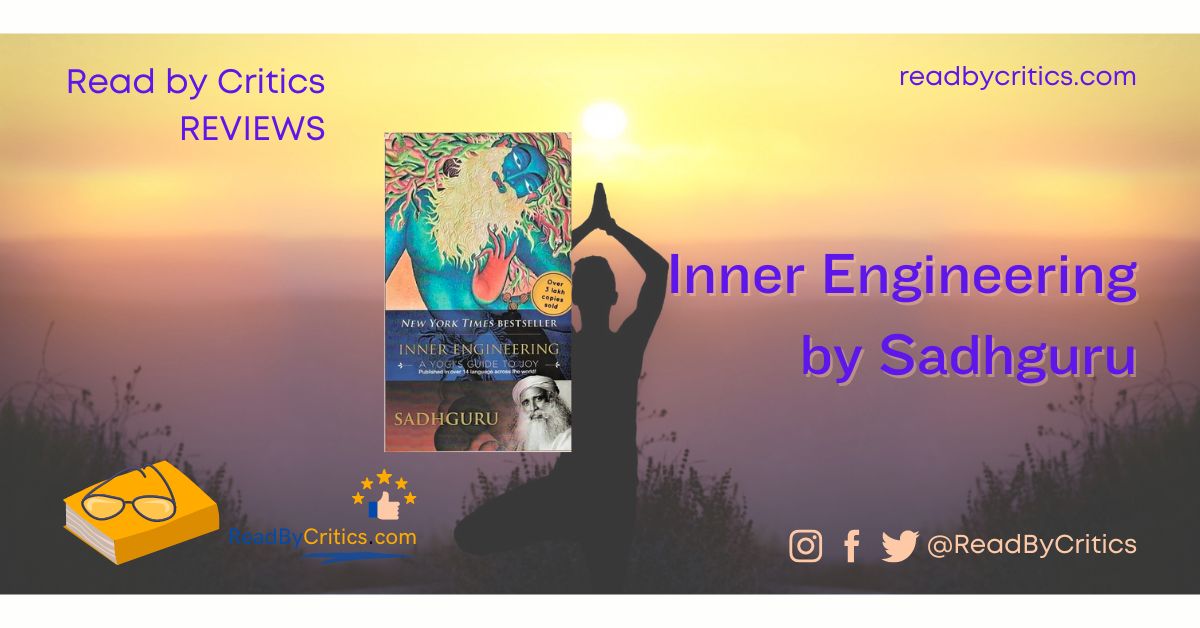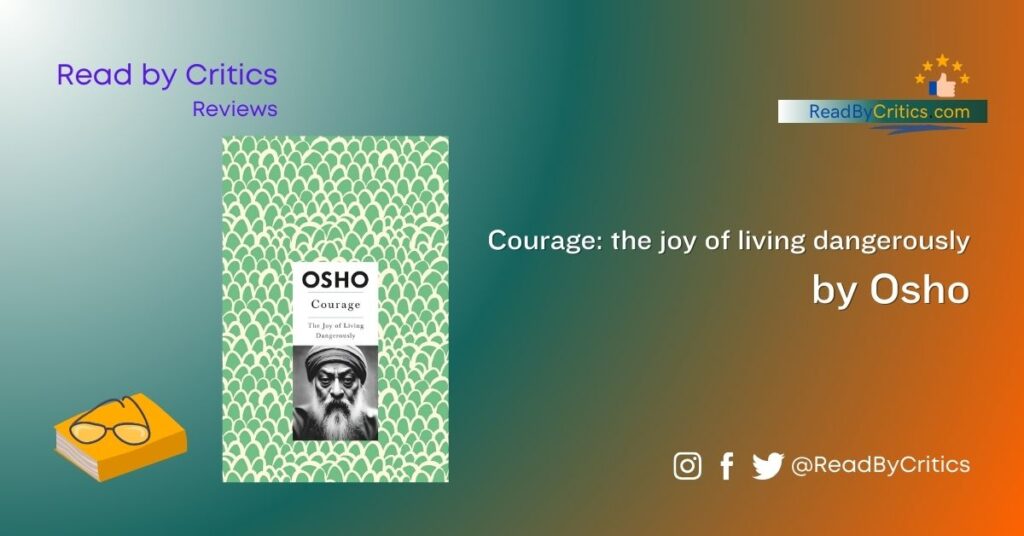The title needs no introduction… formally! A bestselling book by Sadhguru Jaggi Vasudev, the Indian mystic and spiritual Guru, Inner Engineering: A Yogi’s Guide to Joy. The title of the book is expressive and quite so! It tells readers way more about the book than an opinion by someone who claims to have read the book may ever tell. Though it is about engineering, it is not anything external that you can observe visually and enjoy. It is about engineering that is inside, something we can only try to understand by understanding the whys, hows, and whats. If you are one such reader who wants to understand the body and the ways to take control of it, this book by Sadhguru may be helpful. So, let me tell you my observations about the book Inner Engineering and whether you should grab a copy or not. (Chances are YES already because the book’s popularity may have drawn you here. :))
Basics about the book:
“Inner Engineering: A Yogi’s Guide to Joy” by Sadhguru is a comprehensive guide to self-transformation and inner exploration. Published in 2016, this book by Sadhguru dives deep into the world of spiritual realisation of the body and taking it to the heights of its potential. The book aims to provide readers with practical tools and insights to lead a more joyful, balanced, and fulfilling life. In this book, Sadhguru, a famous Indian yogi, Guru and spiritual leader, presents his teachings and practices in a clear and accessible manner, appealing to both spiritual seekers and individuals looking for personal growth and well-being. The book may, at times, appear perplexing if the reader is not very familiar with Hindu Yogic practises and beliefs.
Content of the Book:
“Inner Engineering” is structured into seven chapters, each dedicated to a specific aspect of inner transformation. The author begins with an introduction to the concept of Inner Engineering, which involves shaping the internal dimensions of the self to achieve balance and fulfilment. This concept of inner dimension involves both, the body and the soul, and, in fact, a fine balance of both that is required to lead a fulfilled life on the earth. And as one may expect, the author has to delve into topics such as the nature of the mind, the role of emotions, the science of yoga, the importance of self-awareness, and the significance of establishing a solid connection with oneself and the world around him. Moreover, it is expected from a reader that he or she understands that Yoga, in India, according to Hindu beliefs, transcends beyond being only body bends and poses that heal or shape the body. And only by realising it, a reader may understand the things that Sadhguru mentions and elaborates on in the book.
Style of Writing:
Though the author brings too much popularity on his back, it is essential to engage with the book putting all that aside. And looking at it objectively, one can easily gauge Sadhguru’s writing style may be engaging but it demands intellectual effort from readers. It is conversational and infused with an intellectual sense of humour, trying to make complex spiritual concepts more relatable to a wider audience. However, this ploy may or may not resonate with readers at large. I also noted that his storytelling ability may actually add depth to the content and helps readers grasp abstract ideas with ease, given a reader’s understanding of Yoga and its various dimensions. The author’s spiritual experiences and wisdom are evident throughout the book, as he shares personal anecdotes that illustrate the significance of the practices he proposes. I do acknowledge that some readers might find his writing to be slightly repetitive in certain sections. While it is a fact, the author may have thought it contributes to reinforcing essential principles and teachings, making them easier to remember and apply.
Discussing the major takeaways from the book, one of the book’s highlights is Sadhguru’s explanation of the “Shambhavi Mahamudra” practice— a powerful and ancient meditation technique that aims to align the body, mind, and energy. The step-by-step instructions provided by the author allow readers to try the practice on their own, enhancing the book’s practicality and usability. Moreover, Sadhguru emphasises the importance of incorporating these practices into daily life, rather than limiting them to occasional sessions.
Scientific Authenticity and Factual Correctness:
Readers these days don’t take anything as taken for granted! They want to evaluate, analyse and understand anything they read rather than applaud everything as right. Likewise, in this book, while Sadhguru presents spiritual concepts and practices with conviction, it is expected that critical readers would like to evaluate the book’s scientific authenticity and factual correctness. “Inner Engineering,” let me make it clear, often intertwines spiritual wisdom with scientific perspectives, but it is crucial to approach these claims with discernment. That Yoga has a bettering effect on our body and mind cannot be challenged. The effects, the methods, and the overall assessment of the process may be subjects to conjecture, however. Yoga, at the end of the day, is helpful! Sadhguru’s teachings on yoga and meditation align with scientific research that demonstrates the physical and mental benefits of these practices. The author takes readers into the depths of ancient Hindu practices and interprets them with a contemporary temper. And science testifies to the benefits of Yogic Kriyas. For instance, studies have shown that yoga and meditation can reduce stress, improve cognitive function, and promote overall well-being (Pascoe & Bauer)1. However, there are statements and assertions in the book that might not align with many readers’ understanding of Yoga. For example, as the author suggests the impact of the moon’s phases on the human body, may not have solid scientific evidence to support them and could be perceived as more rooted in traditional beliefs. Nevertheless, it does not take away from the fact that billions believe in many things that the author has mentioned in the book. Ancient Hinduism and its texts have elaborated articles and instances, filled with many things many may believe to be mere assertions in today’s world because they cannot get a full grasp of them.
Well, as with many books in the genre of spirituality and self-help, the scientific authenticity of certain claims might be open to debate. Readers should approach the book with an open mind, retaining a critical perspective while exploring the practices and concepts proposed by Sadhguru.
Comparison with Other Books in the Genre:
“Inner Engineering” stands out in the spiritual and self-help books genre due to its blend of ancient Hindu wisdom, practical techniques, and Sadhguru’s unique voice. While numerous self-help books focus on mindfulness, personal growth, and spiritual development, Sadhguru’s emphasis on inner engineering — shaping oneself consciously — sets the book apart.
In comparison to other spiritual guides, “Inner Engineering” provides a comprehensive system that incorporates not just mental and emotional aspects but also physical practices, making it a well-rounded approach to inner transformation. The inclusion of the Shambhavi Mahamudra practice as a central tool enhances its practicality and effectiveness.
Conclusion:
“Inner Engineering: A Yogi’s Guide to Joy” by Sadhguru is a compelling book that offers readers practical tools for self-discovery and inner transformation. The book bears Sadhguru’s unique writing style, filled with personal anecdotes and engaging storytelling making complex spiritual concepts accessible to a broad audience. The book’s emphasis on incorporating daily practices for self-awareness and joy adds practical value. There will always be those who may claim the book lacks scientific evidence. However, it is always up for debate! And today, after 7 years of its publication, “Inner Engineering” remains an influential work in the genre of spirituality and self-help. The book strikes a fine balance between ancient Hindu Yogic practices and contemporary application of the same!
You can get a copy of this book in paperback, Kindle or hardback formats from Amazon India. Click the link below to go to the Amazon book page and get your copy now:
Click here to buy a copy now – Amazon
Review by Ashish for ReadByCritics
Reference:
1. Pascoe, M. C., Bauer, I. E., & Bauer, A. J. (2019). Mindfulness, Self-Compassion, and Happiness in Non-meditators and Meditators: A Comparative Meta-analysis. Mindfulness
Inner Engineering: A Yogi's Guide to Joy by Sadhguru Jaggi Vasudev – Book Review
-
ReadByCritics Rating
Summary
A book that offers a fine balance of deep-rooted traditional beliefs and their counterparts in science… something that will always invite conjecture. Reading it makes you believe. Re-reading it might give you the much-needed foundation to look further, deeper and observe closely.




